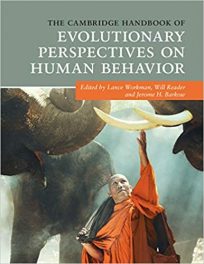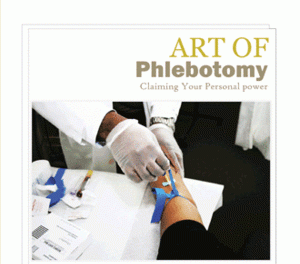Author: Kathy Spencer
Publisher: Da Capo – Lifelong Books – 237 pages
Book Review by Laxmi Chaandi
When I first saw this book, its title enthralled me. But I was skeptical and not sure if it meant what I thought it meant. The title seemed to mean that while some people pay someone a fee for shopping, they can get it done for free through other people. But how?
Or does the title really mean that you can get things for free? You do not really mean that you get stuff for no money at all, do you? one is impelled to ask? But that is what the title really means as I started to read the inside pages.
From our own experience most of us know that manufacturers’ discount coupons come in Sunday newspapers; supermarket reward cards enable us to buy products at lower than marked prices; there are “buy-one-get-one” deals; and occasionally, double coupons. But even with discount coupons, reward cards, buy-one-get-one deals and double coupons used in combinations, it is usually not possible to get grocery products for no money at all.
But the author Kathy Spencer writes that you can actually get products for close to free or even totally free. This is incredible to most of us and most will say it is really impossible to pay nothing for products or even next to nothing.
However Kathy Spencer asserts that in a particular shopping trip to her supermarket she bought $267.22 worth of grocery products for just a penny! How is that possible, you ask, getting so much stuff for a penny?
It is at this point that if you want to know how to save so much money, you really have no other alternative but to buy this book and study it closely and learn Kathy’s shopping secrets. Your investment of $14.95 – the cost of this book – can give you a return of hundreds of times the purchase amount of the book.
The knowledge and ability to buy so much in product for free or near-free does not come in one single instance to you in the book, of course. It is a gradual learning process. It is also a goal-setting and goal-achievement recording process. A little savings the first time you implement the ideas you get from this book will motivate you to save progressively more in your second, third, fourth and subsequent instances of shopping.
As I was reading this book, the first desire that developed in me was to get a gas card so I could fill my tank for free at least few of the times I go to put gas in my car. So a drug store circular had an offer of a $10 Shell gas card with a $30 purchase in that store, but only on specially-marked items.
However since there are no Shell gas stations in or close enough around our town, I decided instead to get a $10 Barnes and Noble gift card which would be useful in this holiday season. So I did that. There are also other gift cards available in that $10 card for $30 purchase deal.
I also recently found in a Sunday paper a 30 percent off coupon on a Proctor & Gamble household product that we use that happens to be available in this same drug store that offers the $10 gift card with a $30 purchase. So the $6 item becomes $4.20 with the 30 percent off, and with the drug store’s one-third off deal (the $10 gift card offer on the $30 purchase) the net cost to me on the $6 P&G item is only $2.80, or a savings of 54 percent on the item.
It is with reading each chapter in this wonderful book carefully, practicing each new savings new idea you learn several times, recording your savings, then learning another savings idea and practicing that again several times, that the reader achieves progressively greater savings.
Kathy Spencer’s book is full of money-savings ideas. In the first 20 pages or so, you develop the right mindset towards the shop-for-free objective. Of course this does not mean you will end up spending zero dollars every time you shop. The right mindset means you pay progressively less and less for things you need and in this process, you become more savings-savvy.
In the subsequent chapters, you put together all that you have learned from the book plus your own specific knowledge and experience and develop a plan. Each chapter offers unique values.
The “Woo Hoo Deal Alert” chapter for example dispels the notion that you cannot combine a manufacturer’s coupon with the store coupon and apply them both towards a product purchase. Kathy points out that you can, and she has. She mentions an instance wherein she bought a $4 pack of bottled water with a $3 manufacturer’s coupon a $1 store coupon. The product cost her nothing. This is a true example of “shopping for free”
In that same chapter she mentions about mail-in rebates that many manufacturers have. Some smart shoppers combine a manufacturer’s coupon and a store coupon and are sometimes able to get a product for free or almost free. Then they use the mail-in rebate from and get a manufacturer’s check in the mail for the product they essentially got for free through the use of coupons. So they actually end up making money. Rite Aid is one company that has a lot of mail-in rebates, the author points out.
Another chapter advises you to plan your future needs based on past or anticipated use of certain products so that you can take advantage of low prices based on bulk purchases, typically from wholesale clubs. This is a great way to not only spend less money but also spend less time.
A great chapter is: “Like Getting Paid to Shop.” This one is focused on CVS deals. Purchases of some items can be made with deep discounts, while others, using the CVS card, along with Extra Care Bucks (ECBS) that you accumulate with purchases through your CVS card, can enable you to “buy” some products for free. And, with the use of accumulated ECBs and a manufacturer’s coupon or RRs (Register Rewards) on specially-marked items, can actually end up making you money.
This is a wonderful book on saving money written in clear and simple language. Last words: buy the book. If you do not buy it, it will cost you money.






